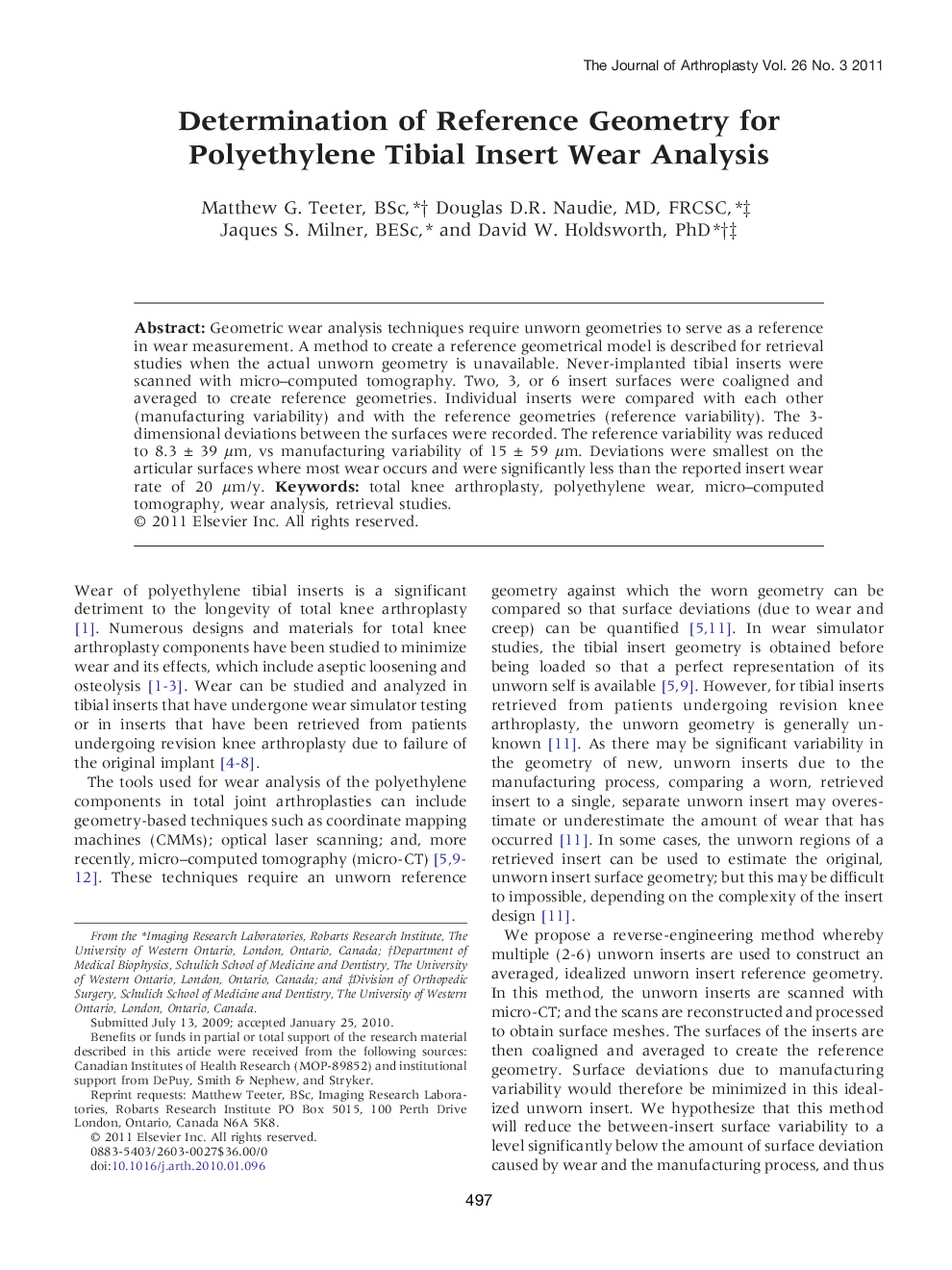| کد مقاله | کد نشریه | سال انتشار | مقاله انگلیسی | نسخه تمام متن |
|---|---|---|---|---|
| 4062789 | 1604038 | 2011 | 7 صفحه PDF | دانلود رایگان |

Geometric wear analysis techniques require unworn geometries to serve as a reference in wear measurement. A method to create a reference geometrical model is described for retrieval studies when the actual unworn geometry is unavailable. Never-implanted tibial inserts were scanned with micro–computed tomography. Two, 3, or 6 insert surfaces were coaligned and averaged to create reference geometries. Individual inserts were compared with each other (manufacturing variability) and with the reference geometries (reference variability). The 3-dimensional deviations between the surfaces were recorded. The reference variability was reduced to 8.3 ± 39 μm, vs manufacturing variability of 15 ± 59 μm. Deviations were smallest on the articular surfaces where most wear occurs and were significantly less than the reported insert wear rate of 20 μm/y.
Journal: The Journal of Arthroplasty - Volume 26, Issue 3, April 2011, Pages 497–503